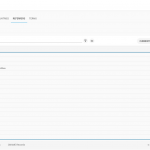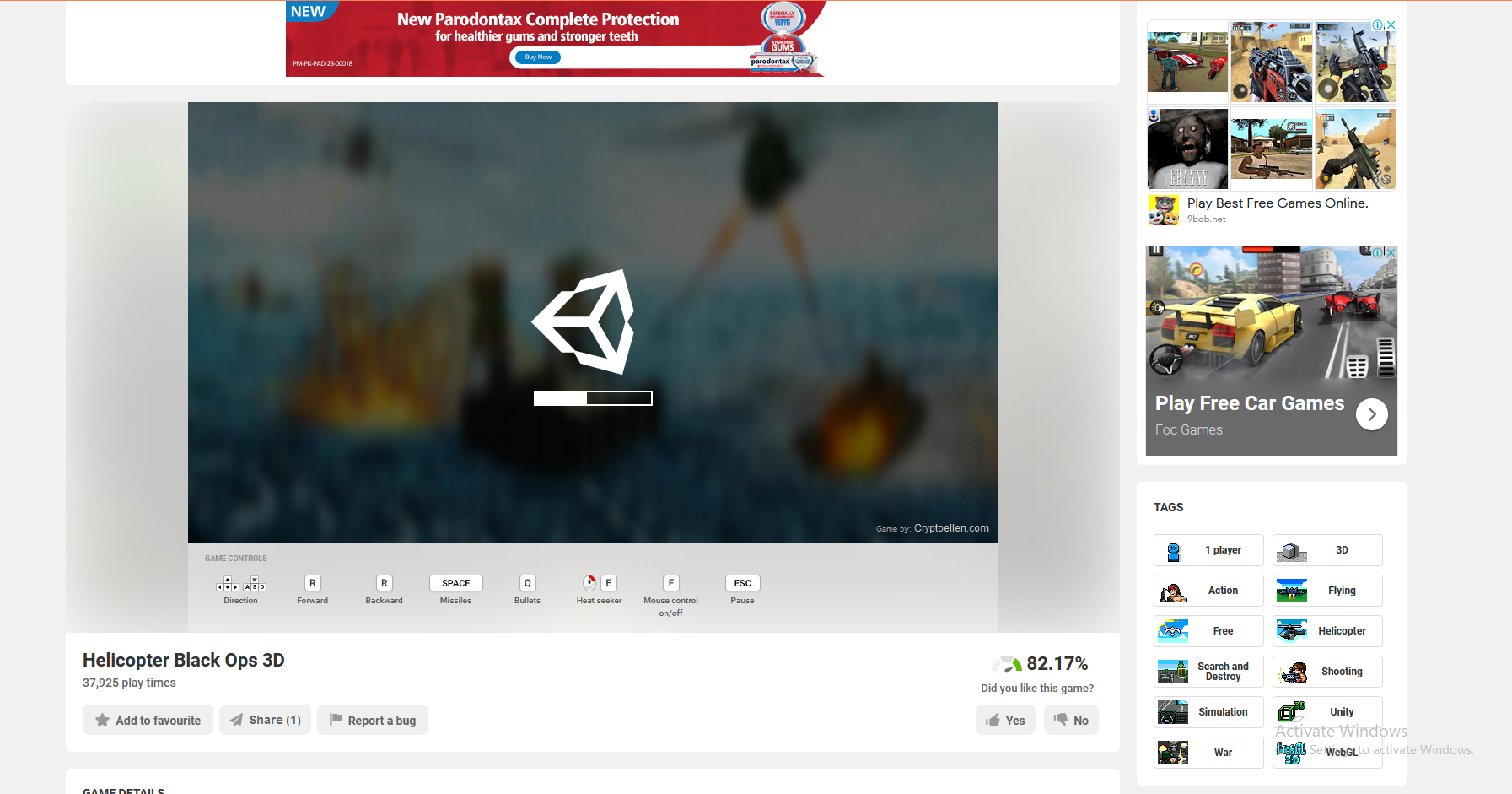Introduction: In the dynamic landscape of technology, Unity stands as a cornerstone for immersive experiences across various platforms. With the emergence of Webgl Voice technology, Unity developers now possess a powerful tool to create voice-enabled applications that redefine user interactions. "The Power of Unity: Harnessing Webgl Voice in Unity with C#" delves into the depths of this cutting-edge technology, offering a comprehensive guide for both beginners and seasoned developers alike.
With over 500 pages of in-depth exploration, this book navigates through the intricacies of Unity's integration with Webgl Voice, empowering readers to unleash the full potential of voice commands in their Unity projects. From foundational concepts to advanced techniques, each chapter is meticulously crafted to provide practical insights and actionable steps towards mastering Unity Webgl Voice development.
Chapter 1: Introduction to Webgl Voice Technology Voice technology has revolutionized how we interact with digital interfaces, offering a seamless and intuitive experience for users. In this chapter, we embark on a journey into the realm of Webgl Voice, understanding its principles, capabilities, and potential applications. From voice recognition to natural language processing, we explore the underlying mechanisms that drive this transformative technology and lay the groundwork for its integration with Unity.
Chapter 2: Understanding Unity's Integration with Webgl Voice
Unity, renowned for its versatility in game development, has seamlessly integrated Webgl Voice technology into its framework, opening doors to a new era of interactive experiences. In this chapter, we delve into the intricacies of Unity's integration with Webgl Voice, unraveling the synergy between these two powerful platforms.
At its core, Unity provides developers with a robust environment for creating immersive applications across various platforms, including web browsers. With the advent of Webgl Voice, developers can now enhance these applications with voice recognition and command capabilities, enriching user interactions and accessibility.
To understand Unity's integration with Webgl Voice, it's essential to grasp the underlying architecture and APIs that facilitate this synergy. Unity exposes APIs for audio input, processing, and output, allowing developers to seamlessly integrate voice recognition and synthesis functionalities into their projects.
Moreover, Unity's support for Webgl enables developers to deploy their voice-enabled applications directly to web browsers, eliminating the need for additional plugins or downloads. This seamless deployment process ensures widespread accessibility and compatibility, reaching users across different devices and platforms.
Throughout this chapter, we'll explore practical examples and demonstrations of Unity projects augmented with Webgl Voice capabilities. From simple voice commands to complex interactions, we'll showcase how developers can leverage Unity's features to create immersive and engaging experiences for their audience.
By the end of this chapter, readers will have a solid understanding of Unity's integration with Webgl Voice and be ready to embark on their journey towards mastering voice-enabled application development with Unity.
Chapter 3: Getting Started with Unity Webgl Voice Plugin
In this chapter, we'll embark on a hands-on journey to kickstart your Unity Webgl Voice development journey by diving into the fundamentals of setting up and utilizing the Webgl Voice plugin within Unity.
Before diving into the implementation details, it's crucial to ensure that you have the necessary tools and prerequisites in place. Ensure you have the latest version of Unity installed on your development machine, along with any additional dependencies required for Webgl Voice integration.
Once you've set up your development environment, the next step is to acquire the Webgl Voice plugin. You can obtain the plugin from reputable sources such as the Unity Asset Store or third-party repositories. After downloading the plugin, follow the installation instructions provided by the developer to integrate it seamlessly into your Unity project.
With the Webgl Voice plugin integrated into your project, it's time to explore its functionalities and APIs. The plugin typically exposes a set of intuitive APIs for voice recognition, synthesis, and processing, allowing you to seamlessly integrate voice capabilities into your Unity applications.
To get started with utilizing the Webgl Voice plugin, we'll begin by creating a simple Unity project or opening an existing one. Once inside the Unity editor, navigate to the Assets menu and import the Webgl Voice plugin package into your project.
After importing the plugin package, you'll have access to a set of prefabs, scripts, and resources that streamline the integration process. Take some time to familiarize yourself with the provided documentation and examples to understand how to leverage the plugin's features effectively.
Next, we'll create a basic scene within Unity where we'll demonstrate the functionality of the Webgl Voice plugin. Start by adding a 3D or 2D environment to your scene, depending on the type of application you're building. Then, incorporate the necessary components from the Webgl Voice plugin, such as voice recognition listeners and synthesis modules, into your scene.
Once the components are in place, test the functionality within the Unity editor to ensure everything is working as expected. Experiment with different voice commands and interactions to get a feel for how the Webgl Voice plugin behaves in real-time.
By the end of this chapter, you'll have a solid foundation for integrating and utilizing the Webgl Voice plugin within your Unity projects. Armed with this knowledge, you'll be well-equipped to explore more advanced features and build immersive voice-enabled applications that captivate your audience.
Chapter 4: Exploring the Fundamentals of C# for Unity Webgl Voice
In this chapter, we delve into the fundamentals of C# programming language within the context of Unity Webgl Voice development. As one of the primary scripting languages used in Unity, C# plays a crucial role in implementing logic, functionality, and interactions in Unity projects, including those augmented with Webgl Voice capabilities.
First and foremost, it's essential to understand the syntax, semantics, and basic principles of C# programming. If you're new to C#, fear not! We'll start with the basics and gradually progress to more advanced concepts tailored specifically for Unity development.
We'll cover essential topics such as variables, data types, operators, control structures (e.g., loops, conditionals), functions, and classes. Understanding these fundamental concepts lays the groundwork for building robust and scalable Unity applications empowered by Webgl Voice technology.
Next, we'll explore how to integrate C# scripts with the Webgl Voice plugin to enable voice recognition, synthesis, and processing within Unity. This involves leveraging Unity's scripting API (Application Programming Interface) to communicate with the Webgl Voice plugin's functionalities seamlessly.
Throughout this chapter, we'll provide practical examples and hands-on exercises to reinforce your understanding of C# programming in the context of Unity Webgl Voice development. From simple scripts to complex interactions, you'll learn how to harness the power of C# to create dynamic and responsive voice-enabled applications.
Additionally, we'll discuss best practices, design patterns, and optimization techniques to ensure your C# scripts are efficient, maintainable, and scalable. By adhering to these principles, you'll be able to develop high-quality Unity projects that deliver exceptional user experiences powered by Webgl Voice technology.
Whether you're a seasoned C# developer looking to dive into Unity or a Unity enthusiast eager to expand your programming skills, this chapter serves as a comprehensive guide to mastering C# for Unity Webgl Voice development. By the end of this chapter, you'll have the knowledge and confidence to write expressive, functional, and elegant C# code to bring your Unity Webgl Voice projects to life.
Chapter 5: Creating Your First Unity Webgl Voice Application
Now that we have a solid understanding of the fundamentals of Unity, Webgl Voice technology, and C# programming, it's time to put our knowledge into practice by creating our first Unity Webgl Voice application.
In this chapter, we'll walk through the step-by-step process of building a simple yet interactive Unity application that leverages Webgl Voice for voice recognition and synthesis. By following along with this tutorial, you'll gain hands-on experience in integrating voice capabilities into your Unity projects.
Step 1: Setting Up the Project
- Launch Unity and create a new 3D project.
- Import the Webgl Voice plugin into your project if you haven't already done so.
Step 2: Designing the Scene
- Create a new scene in Unity.
- Add 3D models, textures, and other assets to design your scene.
- Place interactive objects that respond to voice commands within the scene.
Step 3: Implementing Voice Recognition
- Attach a voice recognition listener component to the main camera or a specific game object in your scene.
- Configure the voice recognition listener to listen for specific voice commands.
- Write C# scripts to handle the execution of actions based on recognized voice commands.
Step 4: Integrating Voice Synthesis
- Implement voice synthesis functionality to provide feedback or responses to the user's voice commands.
- Utilize C# scripts to trigger voice synthesis based on specific conditions or events in the application.
Step 5: Testing and Iteration
- Test your Unity Webgl Voice application within the Unity editor.
- Experiment with different voice commands and interactions to ensure smooth functionality.
- Iterate on your design and implementation based on user feedback and testing results.
By the end of this chapter, you'll have successfully created your first Unity Webgl Voice application, equipped with voice recognition and synthesis capabilities. This hands-on experience will serve as a solid foundation for exploring more advanced features and building increasingly complex Unity projects empowered by Webgl Voice technology.
Chapter 6: Advanced Techniques for Unity Webgl Voice Development
Now that we've covered the basics and created our first Unity Webgl Voice application, it's time to explore advanced techniques to take your projects to the next level. In this chapter, we'll delve into advanced topics and methodologies that will enhance the functionality, performance, and user experience of your Unity Webgl Voice applications.
Advanced Voice Recognition
- Implementing custom voice recognition models using machine learning techniques.
- Fine-tuning voice recognition parameters for improved accuracy and reliability.
- Handling complex voice commands and natural language processing for more intuitive interactions.
Dynamic Voice Synthesis
- Generating dynamic voice responses based on context and user input.
- Integrating external APIs and services for more diverse voice synthesis options.
- Implementing voice modulation and effects for enhanced immersion and user engagement.
Multiplayer and Networking
- Incorporating Webgl Voice capabilities into multiplayer and networked Unity applications.
- Synchronizing voice data between clients for seamless multiplayer experiences.
- Implementing voice chat functionality for real-time communication between players.
Optimization and Performance
- Optimizing voice recognition and synthesis algorithms for efficient resource utilization.
- Implementing asynchronous voice processing to minimize latency and improve responsiveness.
- Profiling and debugging techniques to identify and resolve performance bottlenecks in Unity Webgl Voice applications.
Accessibility and Inclusivity
- Designing user interfaces and interactions with accessibility considerations in mind.
- Implementing alternative input methods for users with disabilities or limitations.
- Conducting user testing and feedback sessions to ensure inclusivity and usability for all users.
By mastering these advanced techniques, you'll be equipped to tackle complex challenges and push the boundaries of what's possible with Unity Webgl Voice development. Whether you're building immersive games, interactive simulations, or productivity tools, these advanced techniques will empower you to create compelling experiences that captivate and delight your audience.
Chapter 7: Optimizing Performance in Unity Webgl Voice Projects
Optimizing performance is crucial for ensuring that your Unity Webgl Voice projects run smoothly and efficiently across various devices and platforms. In this chapter, we'll explore techniques and strategies to optimize the performance of your Unity Webgl Voice applications, improving responsiveness, reducing latency, and enhancing overall user experience.
1. Asset Optimization
- Utilize texture compression and asset bundling to reduce the size of your project.
- Optimize 3D models and audio assets to minimize memory usage and loading times.
- Implement level-of-detail (LOD) systems to dynamically adjust the detail of assets based on distance.
2. Script Optimization
- Profile and optimize C# scripts to identify and eliminate performance bottlenecks.
- Implement object pooling to efficiently manage and reuse instantiated objects.
- Utilize coroutines and asynchronous programming to minimize blocking operations and improve responsiveness.
3. Audio Optimization
- Utilize Unity's audio mixer to manage and optimize audio levels and effects.
- Implement audio occlusion and spatialization to simulate realistic audio environments.
- Use audio compression formats to reduce file sizes without sacrificing quality.
4. Rendering Optimization
- Implement occlusion culling to prevent the rendering of objects that are not visible to the camera.
- Utilize dynamic batching and static batching to reduce draw calls and improve rendering performance.
- Optimize shader complexity and rendering settings to achieve optimal frame rates on target devices.
5. Network Optimization
- Optimize network communication protocols and data serialization for efficient voice data transmission.
- Implement client-side prediction and interpolation to reduce perceived latency in multiplayer voice applications.
- Utilize caching and data compression techniques to minimize bandwidth usage and improve network performance.
By implementing these optimization techniques, you'll ensure that your Unity Webgl Voice projects deliver a seamless and responsive user experience across a wide range of devices and platforms. Additionally, optimizing performance will enable your applications to reach a broader audience and maximize user engagement and satisfaction.
Chapter 8: Integrating Interactive Elements with Unity Webgl Voice
In this chapter, we'll explore how to seamlessly integrate interactive elements into your Unity Webgl Voice projects, enhancing user engagement and immersion. By incorporating interactive elements, you can create dynamic and engaging experiences that respond to user input and voice commands in real-time.
1. Interactive Objects
- Design and implement interactive 3D objects within your Unity scenes.
- Utilize Unity's physics engine to enable realistic interactions such as collision detection and object manipulation.
- Implement event-driven interactions that respond to voice commands and user gestures.
2. User Interfaces (UI)
- Design intuitive and user-friendly UI elements that complement voice interactions.
- Implement UI elements such as buttons, sliders, and menus that respond to voice commands and user input.
- Use Unity's UI system to create dynamic and responsive user interfaces that adapt to different screen sizes and resolutions.
3. Gesture Recognition
- Integrate gesture recognition capabilities to augment voice interactions with gesture-based controls.
- Implement hand-tracking or motion-sensing technologies to detect and interpret user gestures.
- Combine voice commands with gestures to create multimodal interactions that enhance user immersion.
4. Interactive Environments
- Design interactive environments that respond to user actions and voice commands.
- Implement environmental triggers and events that dynamically change the scene based on user input.
- Use particle effects, animations, and sound effects to provide feedback and reinforcement for user interactions.
5. Non-player Characters (NPCs) and AI
- Create interactive NPCs and AI characters that respond to voice commands and engage in meaningful interactions with the player.
- Implement dialogue systems that allow players to converse with NPCs using natural language.
- Utilize AI algorithms to create dynamic and lifelike behaviors for NPCs, enhancing immersion and storytelling.
By integrating interactive elements into your Unity Webgl Voice projects, you can create immersive and engaging experiences that captivate and delight your audience. Whether you're developing games, simulations, or interactive applications, these techniques will empower you to create compelling experiences that resonate with users and keep them coming back for more.
Chapter 9: Enhancing User Experience in Unity Webgl Voice Applications
In this chapter, we'll explore strategies and techniques for enhancing the user experience (UX) in your Unity Webgl Voice applications. By prioritizing user experience, you can create applications that are intuitive, engaging, and enjoyable to use, ultimately maximizing user satisfaction and retention.
1. User-Centered Design
- Adopt a user-centered design approach to understand the needs, preferences, and behaviors of your target audience.
- Conduct user research, interviews, and usability testing to gather insights and feedback for iterative design improvements.
- Design user interfaces and interactions that prioritize simplicity, clarity, and ease of use.
2. Voice User Interface (VUI) Design
- Design intuitive voice user interfaces that guide users through voice interactions with clear prompts and feedback.
- Use natural language processing and dialogue design principles to create conversational voice experiences.
- Provide visual cues or feedback to indicate when the system is listening, processing, or responding to voice commands.
3. Accessibility
- Design your Unity Webgl Voice applications with accessibility in mind to ensure inclusivity for users with disabilities or limitations.
- Implement features such as text-to-speech (TTS) and speech-to-text (STT) for users with visual or motor impairments.
- Provide customizable settings for adjusting font sizes, color contrasts, and input methods to accommodate diverse user needs.
4. Performance Optimization
- Optimize the performance of your Unity Webgl Voice applications to ensure smooth and responsive interactions.
- Minimize loading times, latency, and stuttering to provide a seamless user experience.
- Implement progressive loading techniques to prioritize essential content and features for faster access.
5. Feedback and Iteration
- Solicit feedback from users through surveys, reviews, and user analytics to identify areas for improvement.
- Iterate on your design based on user feedback, testing results, and evolving user needs and expectations.
- Continuously monitor and analyze user interactions and behaviors to make data-driven decisions for UX enhancements.
By prioritizing user experience and implementing these strategies, you can create Unity Webgl Voice applications that are intuitive, accessible, and engaging for your audience. Ultimately, delivering a superior user experience will contribute to the success and longevity of your applications in the competitive landscape of digital experiences.
Chapter 10: Troubleshooting and Debugging in Unity Webgl Voice Projects
In this chapter, we'll explore essential techniques and strategies for troubleshooting and debugging common issues that may arise during the development of Unity Webgl Voice projects. From identifying runtime errors to optimizing performance, mastering troubleshooting and debugging skills is crucial for maintaining the stability and functionality of your applications.
1. Error Identification
- Utilize Unity's console window to identify and diagnose runtime errors, warnings, and exceptions.
- Understand common error messages and their potential causes, such as null reference exceptions or syntax errors.
- Use breakpoints and logging statements to pinpoint the source of errors and track the flow of execution.
2. Debugging Techniques
- Employ Unity's built-in debugging tools, such as the Inspector, Debugger, and Profiler, to inspect variables, objects, and performance metrics.
- Step through code execution using breakpoints and watch variables to observe values and behavior at runtime.
- Utilize conditional breakpoints and watchpoints to trigger debugging actions based on specific conditions or events.
3. Performance Profiling
- Use Unity's Profiler to analyze and optimize the performance of your Webgl Voice projects.
- Identify performance bottlenecks, such as high CPU usage or excessive memory allocation, using the Profiler's detailed metrics.
- Optimize code, assets, and rendering settings based on Profiler data to improve frame rates and reduce loading times.
4. Testing and Quality Assurance
- Conduct thorough testing of your Unity Webgl Voice applications across various devices, browsers, and platforms.
- Use Unity's Play Mode and Build settings to simulate different environments and conditions for testing.
- Implement automated testing frameworks and unit tests to validate the functionality and reliability of your code.
5. Community Support and Resources
- Leverage online forums, community groups, and documentation resources to seek assistance and guidance from experienced developers.
- Participate in Unity's official forums, Discord channels, and Stack Overflow to troubleshoot specific issues and collaborate with peers.
- Stay updated on Unity's latest features, bug fixes, and best practices through official announcements and release notes.
By mastering troubleshooting and debugging techniques, you'll be better equipped to identify and resolve issues in your Unity Webgl Voice projects efficiently. With a proactive approach to debugging and testing, you can ensure the stability, performance, and quality of your applications, providing a seamless user experience for your audience.
Chapter 11: Deploying Your Unity Webgl Voice Application
In this chapter, we'll explore the various methods and considerations for deploying your Unity Webgl Voice application, making it accessible to users across different platforms and devices. From choosing the right hosting solution to optimizing performance for web deployment, deploying your application effectively is essential for reaching your target audience and maximizing user engagement.
1. Choosing a Hosting Solution
- Evaluate different hosting options for deploying your Unity Webgl Voice application, such as self-hosting, cloud hosting, or dedicated game hosting platforms.
- Consider factors such as scalability, reliability, and cost when selecting a hosting provider or service.
2. Exporting from Unity
- Export your Unity project as a Webgl build using Unity's build settings.
- Configure build settings, such as resolution, quality settings, and player settings, to optimize performance and compatibility for web deployment.
3. Web Deployment Considerations
- Optimize asset loading and caching to minimize loading times and improve user experience.
- Ensure compatibility with different web browsers and devices by testing your application across various configurations.
- Implement responsive design techniques to adapt your application's layout and UI elements to different screen sizes and resolutions.
4. Security and Privacy
- Secure your Unity Webgl Voice application by implementing HTTPS encryption and protecting sensitive user data.
- Comply with relevant privacy regulations and guidelines, such as GDPR or COPPA, to safeguard user privacy and data protection.
5. Distribution and Promotion
- Develop a distribution strategy to reach your target audience through channels such as social media, app stores, or dedicated gaming platforms.
- Create promotional materials, such as trailers, screenshots, and press releases, to showcase your Unity Webgl Voice application and attract users.
- Engage with your audience through community forums, social media platforms, and online events to gather feedback and foster a loyal user base.
By following these deployment strategies and considerations, you can successfully deploy your Unity Webgl Voice application and make it available to users worldwide. Whether you're publishing a game, educational app, or productivity tool, effective deployment is essential for achieving your goals and maximizing the impact of your application.
Chapter 12: Exploring Alternative Libraries: PUN2 and Beyond
In this chapter, we'll explore alternative libraries and frameworks for Unity Webgl Voice development, with a focus on Photon Unity Networking 2 (PUN2) and other options beyond the standard Webgl Voice plugin. While Unity's built-in Webgl Voice plugin provides powerful capabilities for voice-enabled applications, exploring alternative libraries can offer additional features, flexibility, and customization options for your projects.
1. Photon Unity Networking 2 (PUN2)
- Overview of Photon Unity Networking 2 (PUN2) and its features for multiplayer networking in Unity.
- Integrating voice communication capabilities into multiplayer games and applications using PUN2.
- Comparing and contrasting the functionality and ease of use of PUN2 with Unity's built-in Webgl Voice plugin.
2. Alternative Libraries and SDKs
- Surveying other libraries and SDKs available for Unity Webgl Voice development, such as Vivox, Agora.io, or Custom Voice.
- Evaluating the features, documentation, and community support of each alternative to determine suitability for your project.
3. Custom Voice Solutions
- Exploring the possibility of developing custom voice solutions tailored to the specific requirements of your Unity Webgl Voice application.
- Leveraging third-party APIs, services, or machine learning models to implement advanced voice recognition and synthesis functionalities.
- Considerations for scalability, reliability, and maintenance when developing and deploying custom voice solutions.
4. Hybrid Approaches
- Exploring hybrid approaches that combine Unity's built-in Webgl Voice plugin with alternative libraries or custom voice solutions.
- Leveraging the strengths of each approach to create robust and feature-rich Unity Webgl Voice applications.
- Considerations for compatibility, integration, and performance optimization when adopting hybrid approaches.
5. Future Trends and Innovations
- Anticipating future trends and innovations in Unity Webgl Voice development, such as advancements in voice recognition algorithms, natural language processing, or cloud-based voice services.
- Staying informed about emerging technologies and platforms that may impact the landscape of Unity Webgl Voice development.
- Strategies for adapting and evolving your Unity Webgl Voice projects to leverage new opportunities and advancements in the field.
By exploring alternative libraries, frameworks, and custom solutions, you can expand your toolkit for Unity Webgl Voice development and unlock new possibilities for your projects. Whether you're developing multiplayer games, communication apps, or interactive experiences, choosing the right combination of tools and technologies is essential for achieving your creative vision and delivering compelling user experiences.
Chapter 13: Building Webgl Voice Capabilities with PUN2
In this chapter, we'll delve deeper into leveraging Photon Unity Networking 2 (PUN2) to build web-based multiplayer games with integrated voice communication capabilities. PUN2 provides a robust framework for real-time networking in Unity, and by integrating voice communication features, we can enhance the multiplayer gaming experience and foster greater player engagement.
1. Setting Up PUN2 for Webgl
- Configure PUN2 for web deployment, ensuring compatibility with Unity's Webgl platform.
- Establish a connection to Photon Cloud or set up a self-hosted Photon Server for multiplayer networking.
2. Implementing Voice Communication
- Integrate voice communication capabilities into your multiplayer game using PUN2's Voice Chat API.
- Create voice channels for players to communicate with each other during gameplay.
- Implement push-to-talk or continuous voice transmission functionality based on your game's requirements.
3. Synchronization and Networking
- Ensure proper synchronization of voice data between players in the multiplayer environment.
- Optimize network traffic and bandwidth usage to minimize latency and maintain smooth voice communication.
- Handle network disconnections and reconnections gracefully to prevent interruptions in voice communication.
4. Voice Quality and Optimization
- Fine-tune voice quality settings such as bitrate, codec selection, and noise suppression to achieve optimal audio clarity and fidelity.
- Implement voice volume normalization and attenuation to simulate spatial audio effects and enhance immersion.
- Monitor and optimize voice-related performance metrics to ensure a seamless and enjoyable multiplayer experience.
5. Testing and Iteration
- Conduct extensive testing of voice communication features in your multiplayer game across different network conditions and player scenarios.
- Gather feedback from players and iterate on voice communication functionality based on usability, performance, and user experience.
- Continuously monitor and update your implementation to address bugs, improve reliability, and incorporate new features or enhancements.
By leveraging PUN2's capabilities for web-based multiplayer networking and integrating voice communication features effectively, you can create immersive and engaging multiplayer games that bring players together in real-time collaborative experiences. With careful planning, implementation, and iteration, you can deliver a high-quality multiplayer gaming experience that keeps players coming back for more.
Chapter 14: Comparison Between Unity Webgl Voice and PUN2
In this chapter, we'll compare and contrast Unity's built-in Webgl Voice plugin with Photon Unity Networking 2 (PUN2) in the context of web-based multiplayer games with voice communication capabilities. By examining the strengths, weaknesses, and use cases of each solution, we can make informed decisions when choosing the right framework for our projects.
1. Integration and Ease of Use
- Evaluate the ease of integration and setup for both Unity Webgl Voice and PUN2.
- Compare the documentation, tutorials, and community support available for each solution to assist developers in getting started.
2. Feature Set and Functionality
- Compare the features and functionality offered by Unity Webgl Voice and PUN2 for voice communication in multiplayer games.
- Assess the flexibility, customization options, and extensibility of each solution to meet diverse project requirements.
3. Performance and Optimization
- Analyze the performance characteristics and optimization techniques available for both Unity Webgl Voice and PUN2.
- Evaluate factors such as network latency, voice quality, and resource usage to determine the suitability of each solution for real-time multiplayer gaming.
4. Scalability and Reliability
- Consider the scalability and reliability of Unity Webgl Voice and PUN2 for handling large numbers of concurrent players and voice communication channels.
- Assess the reliability of network connections, voice synchronization, and error handling mechanisms in each solution.
5. Cost and Licensing
- Compare the cost and licensing models associated with Unity Webgl Voice and PUN2, including any subscription fees, royalties, or usage-based charges.
- Consider the long-term costs and implications of using each solution for commercial projects and ongoing development.
By conducting a comprehensive comparison between Unity Webgl Voice and PUN2, developers can make informed decisions when selecting the appropriate framework for their web-based multiplayer games with voice communication capabilities. Whether prioritizing ease of integration, feature richness, performance optimization, or cost-effectiveness, understanding the strengths and limitations of each solution is essential for achieving project success.
Chapter 15: Future Trends and Innovations in Unity Webgl Voice Development
In this final chapter, we'll explore emerging trends and innovations shaping the future of Unity Webgl Voice development. As technology continues to evolve, new opportunities and challenges arise, driving advancements in voice-enabled applications and multiplayer gaming experiences. By staying informed about future trends, developers can prepare for the next wave of innovation and leverage new opportunities to create compelling experiences for users.
1. Advances in Voice Recognition and Natural Language Processing
- Anticipate advancements in voice recognition algorithms and natural language processing techniques, enabling more accurate and intuitive voice interactions.
- Explore the integration of machine learning and AI technologies to enhance voice recognition capabilities and support complex conversational interactions.
2. Cross-Platform Compatibility and Integration
- Expect further improvements in cross-platform compatibility and integration for Unity Webgl Voice applications, allowing seamless experiences across different devices and platforms.
- Explore integration with emerging platforms such as virtual reality (VR), augmented reality (AR), and mixed reality (MR) for immersive and interactive voice experiences.
3. Interactive and Immersive Experiences
- Explore new ways to create interactive and immersive experiences with voice-enabled applications, leveraging spatial audio, haptic feedback, and other sensory inputs.
- Experiment with innovative gameplay mechanics and storytelling techniques that combine voice interactions with traditional game mechanics.
4. Social and Community Engagement
- Foster social and community engagement within Unity Webgl Voice applications, facilitating multiplayer interactions, user-generated content, and collaborative experiences.
- Explore features such as voice-based social networks, virtual hangouts, and community-driven content creation tools to build vibrant and engaged communities.
5. Ethical and Privacy Considerations
- Address ethical and privacy considerations associated with voice-enabled applications, such as data privacy, consent, and security.
- Implement transparent and user-centric practices for data collection, processing, and storage to ensure trust and compliance with regulations.
By embracing future trends and innovations in Unity Webgl Voice development, developers can unlock new possibilities and create transformative experiences that push the boundaries of interactive storytelling, social interaction, and gameplay. Whether exploring new technologies, experimenting with innovative features, or addressing ethical considerations, staying ahead of the curve is essential for driving innovation and delivering impactful experiences for users.
As you continue your journey in Unity Webgl Voice development, it's essential to have access to additional resources and opportunities for further learning. In this chapter, we'll explore a variety of resources, including documentation, tutorials, communities, and online courses, to support your ongoing growth and development in the field.
1. Unity Documentation and Tutorials
- Explore Unity's official documentation and tutorials on Webgl Voice development to deepen your understanding of core concepts and best practices.
- Access step-by-step guides, code samples, and video tutorials to learn new techniques and workflows for integrating voice technology into your Unity projects.
2. Online Courses and Learning Platforms
- Enroll in online courses and learning platforms, such as Udemy, Coursera, or LinkedIn Learning, to gain comprehensive knowledge and practical skills in Unity Webgl Voice development.
- Choose from a variety of courses covering topics such as voice recognition, multiplayer networking, game development, and more, tailored to your learning goals and experience level.
3. Community Forums and Discord Channels
- Join Unity's official forums, Discord channels, and community groups dedicated to Webgl Voice development to connect with fellow developers, share insights, and seek assistance with your projects.
- Engage in discussions, ask questions, and participate in community events to expand your network and stay updated on the latest trends and developments in the field.
4. Open Source Projects and GitHub Repositories
- Contribute to open source projects and GitHub repositories related to Unity Webgl Voice development to gain hands-on experience, collaborate with other developers, and showcase your skills.
- Explore existing projects, fork repositories, and submit pull requests to make meaningful contributions to the community and advance the state of the art in voice-enabled applications.
5. Conferences, Workshops, and Webinars
- Attend conferences, workshops, and webinars focused on Unity game development, voice technology, and interactive storytelling to learn from industry experts, gain insights into emerging trends, and network with professionals in the field.
- Stay informed about upcoming events, both online and offline, and take advantage of opportunities to expand your knowledge and connect with peers.
By leveraging these additional resources and opportunities for further learning, you can continue to grow and advance in Unity Webgl Voice development, unlocking new possibilities and achieving your goals in the field. Whether you're a beginner or an experienced developer, there's always something new to learn and explore on your journey to mastering Unity Webgl Voice development.










